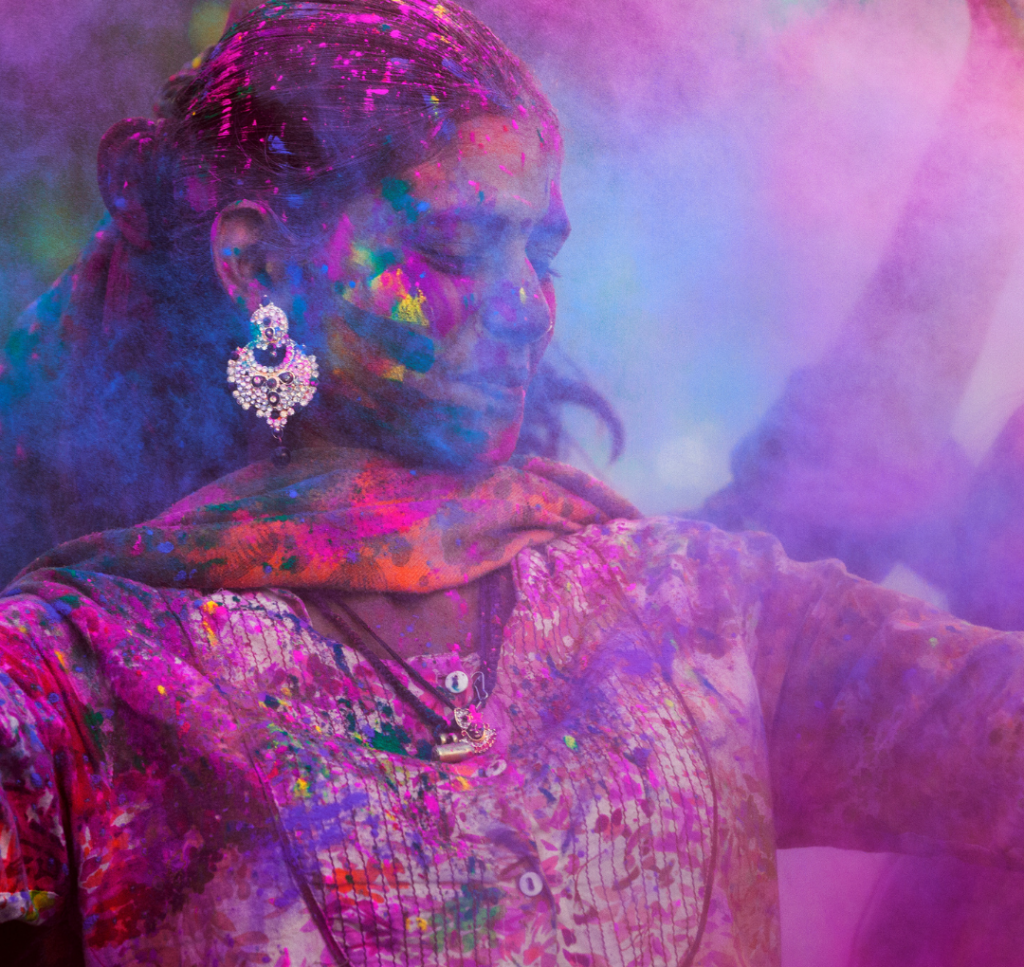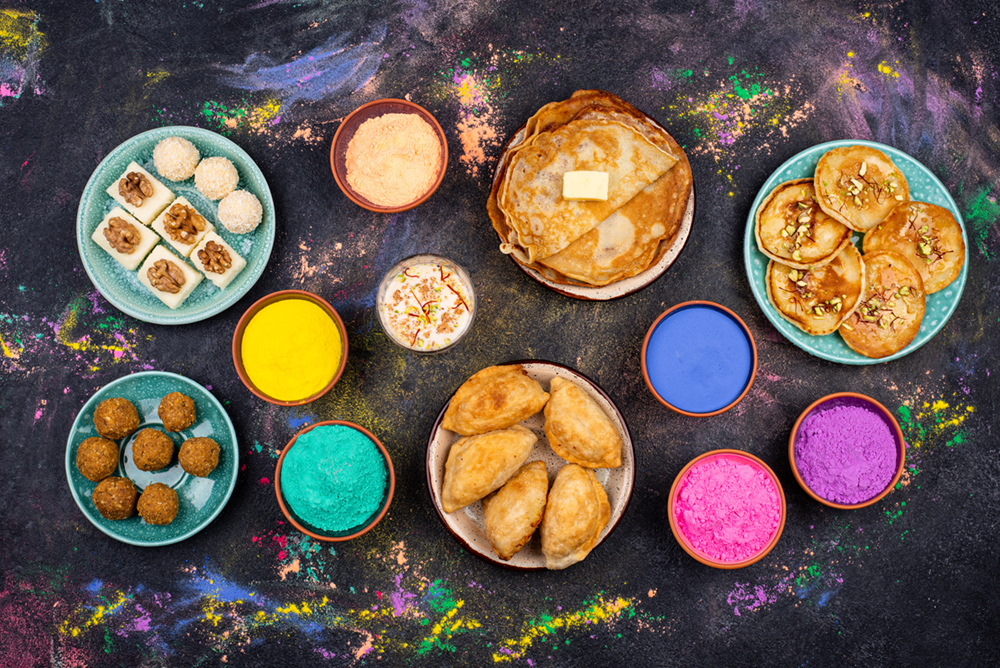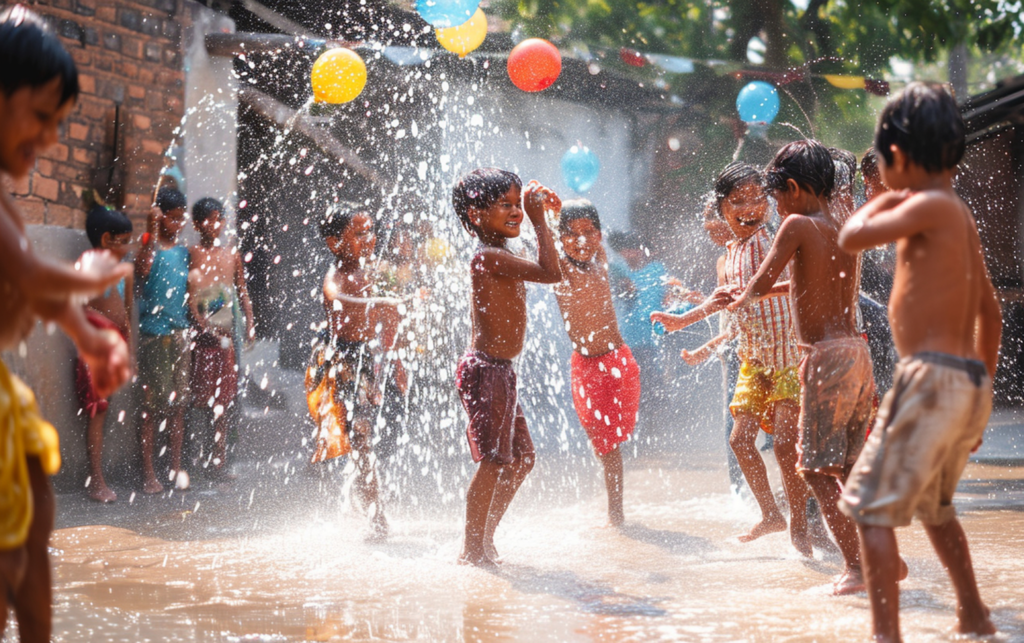
Holi is a vibrant and colorful Hindu festival celebrated predominantly in India and Nepal but also observed by communities around the world.
Also known as the “Festival of Colors” or “Festival of Love,” Holi typically takes place in March, marking the arrival of spring and the triumph of good over evil. The Holi festival always falls on Purnima, or the day of the full moon. The festival is a joyous occasion where people come together to play with colors, enjoy festive foods, and celebrate the spirit of unity and joy.
Key features of the Holi festival include:

- Holika Dahan: The celebrations usually begin with Holika Dahan, a ritualistic bonfire held on the night before the main day of Holi. People gather around the bonfire, which symbolizes the victory of good over evil and the burning of the demoness Holika, as narrated in Hindu mythology.
- Playing with Colors: The main day of Holi is a sea of colors. People of all ages, backgrounds, and social statuses come together to play with colored powders (gulal) and water. They chase each other, throw colored powders, and engage in a playful, festive atmosphere. It’s a time when social norms are relaxed, and everyone is encouraged to join the celebration.

- Music and Dance: Traditional and modern music plays a significant role in Holi celebrations. People dance to energetic tunes, and the atmosphere is filled with cheerful beats. Community gatherings, known as Holi Milan, provide opportunities for people to come together, dance, and share the festive spirit.
- Sweets and Special Foods: Holi is also a time for indulging in festive foods and sweets. Traditional delicacies like gujiya (sweet dumplings), malpua (pancakes), and thandai (a spiced milk drink) are prepared and shared among friends and family.

- Water Balloon Fights: Alongside the colored powders, water balloons and water guns are often used during Holi. People drench each other in water, adding an extra touch of fun and cooling down the festive atmosphere.
- Cultural Significance: Beyond the joyous festivities, Holi has cultural and religious significance. It symbolizes the triumph of good over evil, the arrival of spring, and the cultivation of a sense of community and friendship.
Holi is a festival that transcends religious and social boundaries, bringing people together in a spirit of joy, love, and harmony. It is an opportunity for renewal, forgiveness, and the strengthening of bonds among family and friends.
Local Events and Information:
- March 23, 2024 – Holi 2024 – Festival of color
- Holi Festive Information & Guide in India